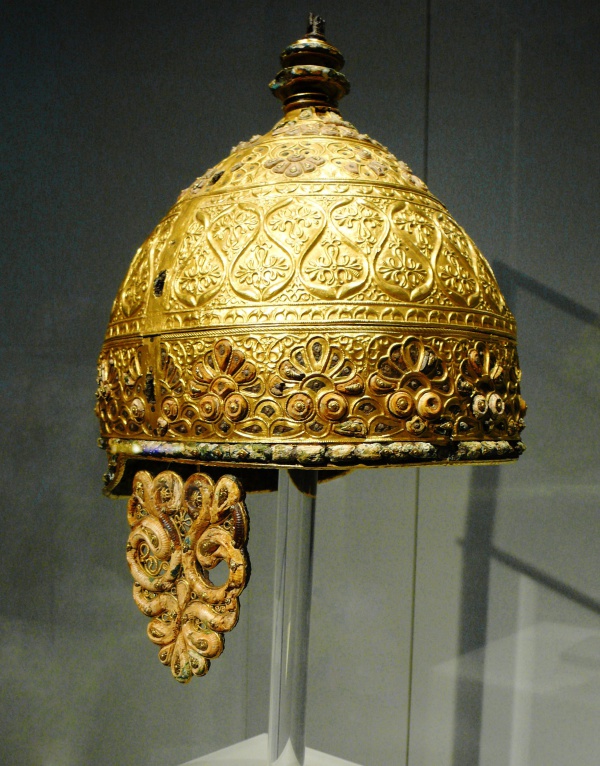Facts About Agris Helmet
The Agris Helmet is a remarkable artifact of Celtic history, dating back to approximately 350 BC. Discovered in 1981 in a cave near Agris, Charente, France, it is celebrated as a masterpiece of Celtic art, likely serving ceremonial purposes rather than being used in combat.
Constructed from an iron cap, the helmet is embellished with bronze bands and gold leaf, highlighted with coral decorations secured by silver rivets. The intricate designs on the helmet reveal early Celtic patterns, with evident Etruscan or Greek influences, making it a unique artifact.
The helmet was found in the Perrats cave, a site with evidence of human activity spanning from the Bronze Age to the Middle Ages. It is believed that the helmet was intentionally buried, possibly as part of a ritual. Today, this extraordinary piece can be viewed at the Musée d'Angoulême in France, where it has also been featured in international exhibitions.
The helmet's design places it within the early La Tène culture, featuring motifs that link it to Western Europe and the Central Alps. Scholars debate its precise date, but the consensus places it in the 4th century BC.
Structurally, the helmet comprises an iron cap covered with decorative bronze bands, gold leaf, and coral embellishments. The rich ornamentation includes palmettes and other intricate patterns, showcasing a blend of Celtic artistic styles from the 5th and 4th centuries BC.
The helmet's origins remain a subject of debate among scholars. Some propose it originated from Italy, the North Alpine region, or the region where it was discovered in France. The high purity of the gold used suggests a possible local source in the Atlantic region, with craftsmen potentially trained in the North Alpine tradition.

 Spain
Spain